I’ve had the Burgener & Rippetoe multi-purpose weightlifting/powerlifting bar in my garage gym for about fifteen months now. This bar has been the primary bar in my gym, and it has been used consistently by two people for over a year now. Since I’ve had the B&R bar for a good amount of time now and I’ve have had a chance to put some real miles on it, I want to review it and share my thoughts on it.
Update: this review is no longer valid on new purchases of the B&R Bar. Rogue Fitness has taken production of this bar from York, and Rogue’s iteration of the B&R is different enough that the majority of the content in this review just simply does not apply. Since classic York B&R Bars no doubt still exist in the used market, I have decided to leave this review intact.
B&R Bar Review – Introduction
Turns out I got pretty lucky when I bought the B&R bar. Back when I was shopping around for bars I was having a really hard time deciding on which bar to purchase. I knew I wanted a solid, jack of all trades bar; something suitable for both the big three and the Olympic lifts. I also knew not to choose a $100 bar unless I wanted to buy another bar soon, but knowing that fact didn’t actually help me pick out the right bar.
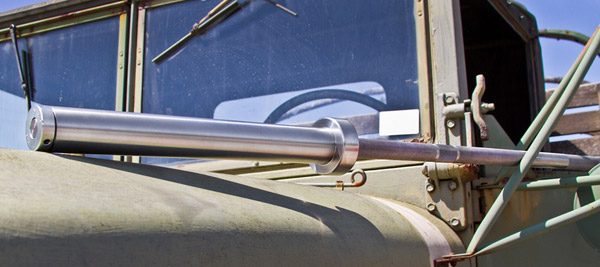
After a bunch of research, I eventually went ahead and pulled the trigger on the B&R Bar. It had fantastic reviews, a fair price, impressive specs, and it also had Rippetoe’s name on it. I was familiar with Rippetoe; I had read his book, Starting Strength years before, and found him to come off as a knowledgeable guy, so I said screw it and bought the bar.
Obviously buying a bar just because it has someone’s name on it isn’t the best idea. Like I said, I got lucky that the B&R was just as good in reality as it was on paper. In any case, if I had known then what I now know about bars the process would not have needed to come down to a random choice. I hope this review takes some of the guesswork out of it for you.
How Olympic Bars Differ
There are a bunch of different things to know about bars and how they can differ. There is shaft diameter, knurl markings, knurl depth, tensile strength, yield strength, sleeve rotation, sleeve attachment method, protective coating, bar whip, etc. Then you have the differences in men’s bars and women’s bars. There’s a lot to know!
When you understand what each of these things are and how they work, you can make a much more informed decision when buying a bar for your gym; no matter what kind of bar you’re looking for. If you’re interested, I go into a lot more detail on things like yield strength, sleeve construction, bar finishes, and technical stuff like that in my barbell buying guide.
Burgener & Rippetoe Bar – Specifications
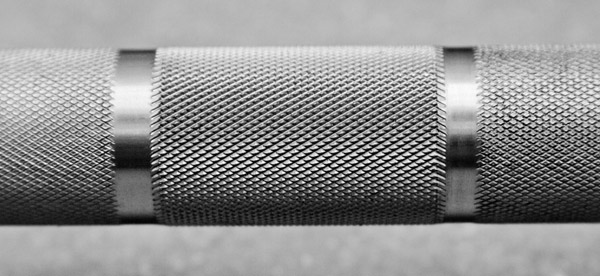
The B&R is dual marked for both Olympic and Powerlifting lifts. The knurling itself is middle of the road; it has a nice bite to it but it’s not sharp enough to be painful.
Here are the specs for the York B&R Multi-Purpose Bar. There is a women’s version of the B&R bar as well. While this review doesn’t have anything to do with the women’s bar, I did include all the specifications that differ from the men’s bar in this section in case any ladies reading this might be interested.
- Bar Weight: 20 kg / 15 kg (women’s)
- Shaft Diameter: 29 mm / 25 mm (women’s)
- Knurling Marks: Dual Olympic & Power
- Center Knurling: present / not present (women’s)
- Knurl Depth: Medium
- Rotation Mechanism: Sintered Bushings (oil-impregnated)
- Sleeve Attachment: Proprietary York End Cap
- Shaft / Sleeve Coating: None – Bare Steel
- Tensile Strength: 195,000 PSI / 195,000 PSI (women’s)
- Manufactured by York Barbell in Canada
- Price $295 / $285 (women’s)
B&R Review – What Makes This Bar So Good
Reason #1 – Tensile Strength vs Price
The tensile strength rating of this bar is considerably high by today’s standards at 195,000 PSI. What that means is that it takes 195,000 PSI of force applied to the bar before the bar will break. A PSI rating this high is not often found on bars in this price range. Most bars in the $300 range tend to be closer to 160,000 PSI.
Update: keep in mind that when this was written 190k bars were not yet commonplace.
For instance, the Rogue Bar is rated at 155,000 PSI and costs only a few bucks less than the B&R. The Pendlay NexGen and Pendlay HD bars are both a respectable 190,000 PSI but start at $330 and go up from there. Ivanko has bars in the 200s but prices start at around $1000. The Westside Power Bar does have a 205,000 PSI rating but it’s $80 more and is exclusively a power bar; meaning it’ll have no elasticity for the Olympic lifts.
Speaking of whip, I’ve seen it said that this bar is a nice middle of the road bar for Olympic and Power lifts; meaning it has a moderate amount of whip but is still rigid enough to hold onto heavy loads without much bend. My personal opinion is that this bar is more rigid than whippy. If you want a large amount of bar whip, you probably want a 28 mm Olympic bar.
Reason #2 – Excellent Spin
The B&R bar uses bronze sintered bushings for sleeve rotation. This type of construction is super durable and produces a very reliable spin; and for half the price of a needle bearing bar. Sintered bushings are self-lubricating and therefore essentially maintenance free. I’ve never had to oil the sleeves of my B&R, yet they spin as well as the day UPS dropped it off.
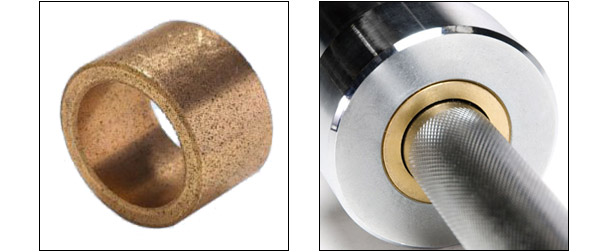
Over the last 15 months I’ve dropped the hell out of my B&R bar, and the bronze bushings are taking those drops like a champ. I don’t care that the sleeves of a bushing bar won’t spin for half an hour like a needle bearing bar does, but I do care that they spin reliably and smoothly. This bar offers what I want. Good spin, great durability, and at a reasonable price.
Reason #3 – Pro or Con? Bare Steel
The Burgener & Rippetoe weightlifting bar is a bare steel bar. There is no zinc or chrome coating on the bar. A bare steel bar is a beautiful thing that feels absolutely amazing and natural in your hands. However, it does require a little maintenance.
The bar needs to be oiled and brushed periodically. The climate you live in really dictates how often this needs to be done. While this may be a deal breaker for some, I personally find the feel of bare steel to be worth the little bit of extra effort. It develops a great patina over time, and as Rogue puts it – it matures with your training.
Reason #4 – Price
I’ve already mentioned this a couple times, but it deserves to be a stand-alone reason for why this bar rocks. This bar is under $300 and I believe that’s a steal. It’s sturdier than any other bar under $300 and many bars over $300. It’s designed by two renowned weightlifting coaches; Burgener and Rippetoe obviously, built by York Barbell; one of the most reputable barbell companies on Earth, and sold by the best equipment dealers in the world; Rogue. I challenge anyone to find a better bar for less money.
Update: again, remember when this was written please!
Reason #5 – Customer Reviews
I’m not alone when it comes to how I feel about the York B&R bar. The reviews left by other customers give this barbell a full 5-star review. There is not a single bad review for this bar.
Burgener & Rippetoe Barbell Review – Summary
I hands down recommend this bar. If you’ve read any of my other bar articles then you’ve seen me mention and praise the B&R bar before. This is not an opinion I developed just for the sake of this review. I love the bare steel feel, I love the knurling, I love the price, and I love that it hasn’t given me any reason to dislike it.
No matter what bar you think that you want, I strongly suggest you at least take a look at the Burgener & Rippetoe Bar and read some of the reviews before you buy any other dual-marked Olympic bar.
If you got this far then the article couldn’t have been that bad, right? Please consider liking and/or sharing it. It’s much appreciated.
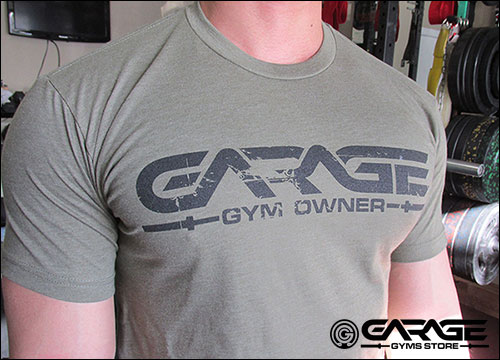


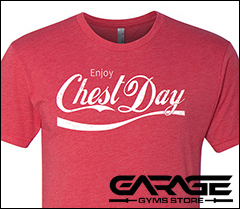
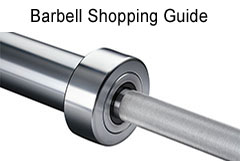
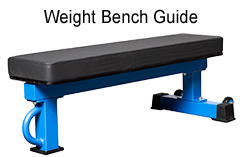
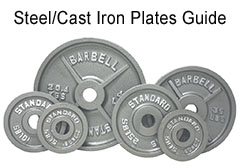
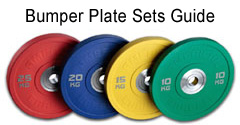
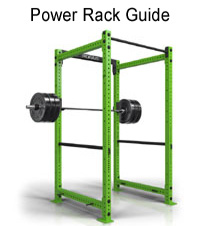
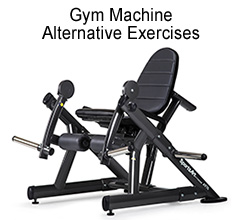

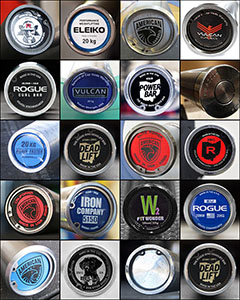

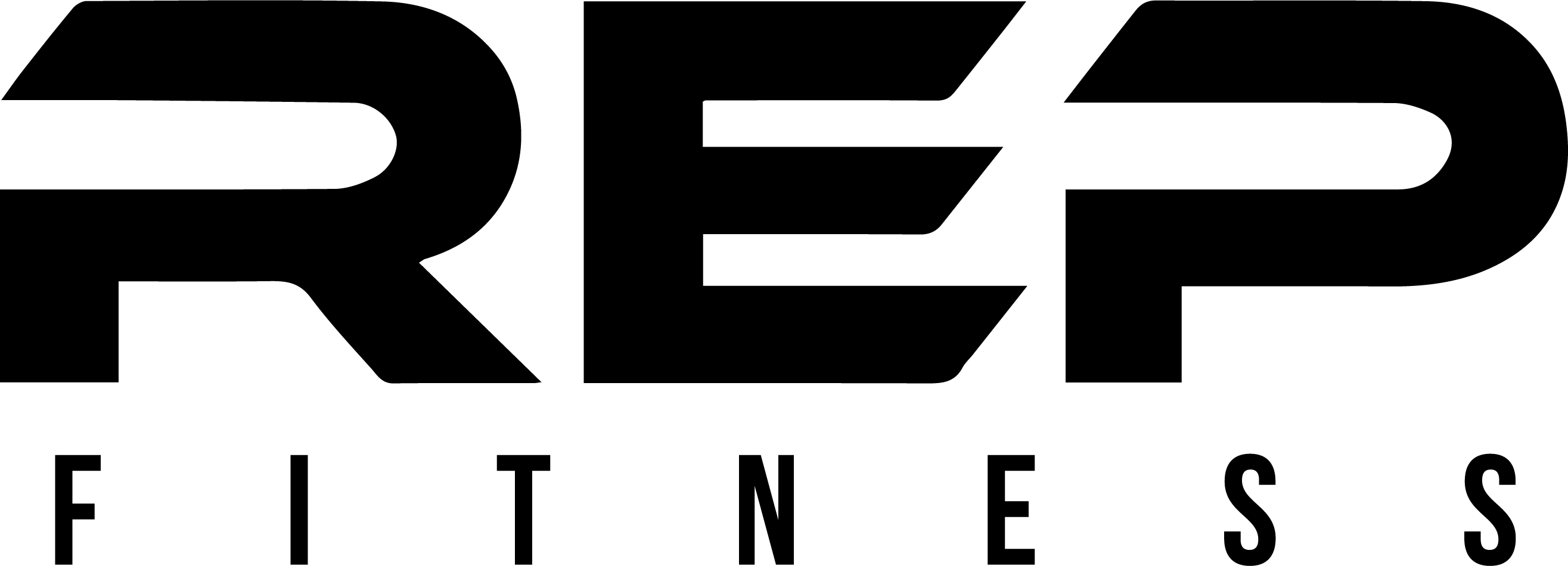
Great review. I’ve had my eye on the B&R for quite some time now but haven’t really been able to pull the trigger as I’m located in India (no local Rogue dealers and customs is a bitch over here). Just one point, the part where you mention tensile strength is accompanied by a picture of the bar undergoing a static bend test. Tensile strength however is the maximum stress the bar can withstand while being stretched, something which the bar will never be subjected to, but is nevertheless an accepted parameter for bar strength. I also probably come across as a big jerk for pointing out something so trivial but the engineer in me just couldn’t resist :)
Yes, I know exactly what you’re saying. The barbell industry has chosen to define the strength of their bars using tensile strength while actually demonstrating bar strength with bend tests… I just go with the flow. I think everyone gets the general idea though.
I would like to follow up on Sandarpan’s comment. I am an engineer and probably more seasoned. Tensile strength (or more specifically either yield strength or ultimate strength) is directly related to a bending test. The stress in the bar is the old Mc/I per beam theory. Half of the bar undergoes a tensile stress and the other half undergoes a compressive stress. The neutral axis is at the center for the simple shape of a circle. In any case, the tensile strength is highly relevant to how the bar behaves in bending. It is basic beam theory. In fact, a bending test is the most relevant since this is the failure mode of a bar.
Side note: At the onset of plastic deformation due to bending (permanent deformation) you still have a quite a bit of capability. The bar won’t actually fracture until you load it about 70% more due to plastic bending. The plastic factor of a circle is 1.7, which is pretty good. Most of the steels are relatively long elongation so you should realize most of that 70% bump in real life. Of course, the bar is going to bend to heck by the time you ever got there. In any case, unless there is a severe defect (fracture or notch), you won’t ever completely fail the bar. I have seen this asked before and that is the technical reason.
Hi Brian,
Yes what you say is true. But we must also keep in mind that a static bending test is hardly an accurate simulation of what happens to a barbell in case it falls on the rack pins (which is when most of the bent bars occur).
On a side note, I’ve always wondered what kind of steel barbells are made of. Especially the 200000 psi Tensile strength barbells. It seems steel becomes brittle at high strengths. At least the steels I looked up do. What steel could have such high strength and yet flex enough to be useful as a barbell?
Thanks
Sandarpan don’t confuse toughness and strength. I know it is often talked about in terms of “strength” from a marketing and lay point of view but in those cases they are higher toughness low strength from technical PoV. I am not an engineer but make knives. You always tread a line between tough and strength and you can’t maximise one without the sacrificing the other but probably know that if you have engineering background. Some steels types are better suited to one although some capable of high strength can be made lower (and tougher) by appropriate heat treatment.
Question, I’m starting to buy stuff for my home gym and I read a lot of good things about this bar. My only thing is that I am strictly a powerlifter so I have no use for the spin. Anytime I squat heavy with olympic bars I have a problem of it spinning/rolling as I descend – especially when I hit the bottom of my squat. Will this bar have that same problem? Ironically crappy barbels in commercial gyms do not give me this problem because they have little to no spin.
Hey Brian, no the B&R isn’t a high-spin bar. It will spin, but it’s not going to get out of control. I used this bar almost exclusively for squats, deads, bench, rows, everything for the better part of two years and loved it. It’s much more of a power bar than an Olympic bar, and it has a good shaft diameter for powerlifting at 29 mm. If you watch this video (https://www.youtube.com/watch?v=lsUoUZ9WYHo), I spin the B&R (bottom bar) so you can see that while it does spin, it’s not crazy or anything. If even that is too much for you, I’m not sure what to tell you other than to buy a POS pinned bar, but then the rest of the bar will suck.
Will the Burgener & Rippetoe Men’s Bar work with Ivanko Plates? The folks at Ironcompany.com won’t confirm that the Ivanko Premium OM Olympic Machined Barbell Plates will work with this bar and they won’t send 2.5 pound plate to test it because I need to burn $100 to find out. Great customer service right? Thanks so much!
I cant think of any reason they wouldn’t… I’ve only ever heard of Olympic plate holes being bigger than they should be, but not smaller.
Hey Jb,
Just wondering what your thoughts are on the York 2200 Elite Training Bar w/ bushings? I’ve read the specs on it and it seems like a great bar and for a great price @ $450 CAD after taxes and shipping. Thanks for your time, your site has always been a great resource!
I haven’t had a non-B&R York bar in my hands for a long time. I don’t have a problem with the North American York bars. I tend to not mention them much here because they have a pretty bad reputation in the customer service department. I don’t mind talking about the B&R since only Rogue sells it, and Rogue will make sure you’re taken care of, but I kind of leave it at that with the brand.
I can’t tell you anything specific about the Elite line because it’s just been too long, but I don’t have anything negative to say about it other than that customer service concern; which of course is only an issue if there is a problem with your bar.
Reasonably priced good bar options outside of the US are slim, I know. I’ve been looking to get a larger variety of brands reviewed, and a York bar is on that list, but it just hasn’t happened yet =/
I’ve got a thread over on BB.com workout equipment forum that talks about the B&R 1.0 bar I purchased from Rogue. It is NOT a bar you should buy if you want tight sleeves. Everyone basically came to the conclusion that York redid the design on the sleeves and it’s now got a 1/16 inch gap around the sleeve and a snap ring inside. The snap ring may not be a big deal but the 1/16 inch gap gives the sleeve “play” makes it very loud when dropping as the bar hits the bushing with impact. While many people that have the new design don’t care or didn’t notice, I do not consider this a good bar for olympic lifts even though I’m not an expert.
It is advertised as a bar good drops and I would love to hear JBurgeson’s opinion on these changes if he was not aware of it before. Part of the reason I bought this bar was because I read this review although I’m not blaming Jburgeson for my purchase by any means. I think the information should be updated. I also do not think the bushing is “bronze” but is some kind of proprietary alloy that York came up with that is supposed to be better and cheaper. You can follow the full thread on:
http://forum.bodybuilding.com/showthread.php?t=169828343&page=1
B&R bar drop 1:
https://www.youtube.com/watch?v=RSgsGpwLnYI
B&R bar drop 2:
https://www.youtube.com/watch?v=LwjA5bZjTaQ
B&R vs crap bar sleeve rattles:
https://www.youtube.com/watch?v=sxHNaEIeabs
B&R bumper spins:
https://www.youtube.com/watch?v=zGSvnBTcI8Q
B&R sleeve wiggling:
https://www.youtube.com/watch?v=cvd9tkNf2Jw
My B&R is like four years old just about. It’s definitely possible that they changed something… the bushings look much further recessed on yours than mine. I wouldn’t say mine are flush with the sleeve, but it’s close. Maybe it’s these stealth changes that put Rogue in the position to take over production. Well for what it’s worth, the York B&R was the only York bar worth owning, but it looks like these changes have eliminated York as a contender in the barbell market. I’d send the thing back and either get the new one or something else entirely. Eat the shipping if you have to, but don’t get stuck with a bar you don’t like regardless of what bar it is.
I receives confirmation that York changed the design to what you see in Sept 2014. I think I am going to swap for B&R 2.0 but can find few reviews on it. I mainly want to know about how Rogue redid the sleeves.
It says snap ring design which is in line with all of their bushing bars save for the Echo. It’s got to be a better design than the updated York. I wonder why in the hell York made any changes at all. I remember about a year ago Rogue lowered the PSI from 205k on the website and no one would give me a straight answer as to why. I suspected back then that it changed but Rogue said it did not. I guess the customer rep was wrong.
I can’t believe it took so long for this to come up. People buy that bar left and right, and I’ve always stood behind that bar because the original really is a beast. Sorry that you’re the one to figure this out, but I appreciate you bringing this to my attention. I’ll update the top of this review right now.
I am a little OCD and can spot flaws. Unfortunately this was both my first barbell purchase and first Rogue order. My garage gym is newly constructed. Rogue is making it right however. Thanks for the great site.
i look for information about ROGUE ELEPHANT bar (Deadlift special) ?price.,? tensile? were sell it ?loadable lenght oh each sleeve?….
It’s my understanding that the Elephant Bar was made exclusively for the Arnold, and was never made available for sale. There was a promo video of the ’16 Arnold (I think) that discussed the bar’s specs in minor detail, but I don’t recall ever seeing a published list of specifications.